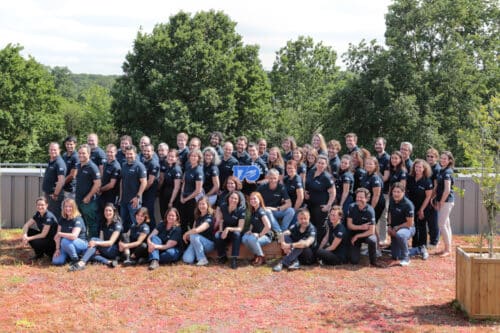The new Fertilizing Products Regulation (FPR) (Regulation (EU) 2019/1009) has entered into force on the European market in July 2022. In the following article, Agnès Jørgensen and Fabien Achard, respectively Regulatory Affairs Manager, and Biostimulants Product Manager at Agrauxine by Lesaffre, discuss the outlines of this new European regulation and its implication on the evolution of the biostimulants market.

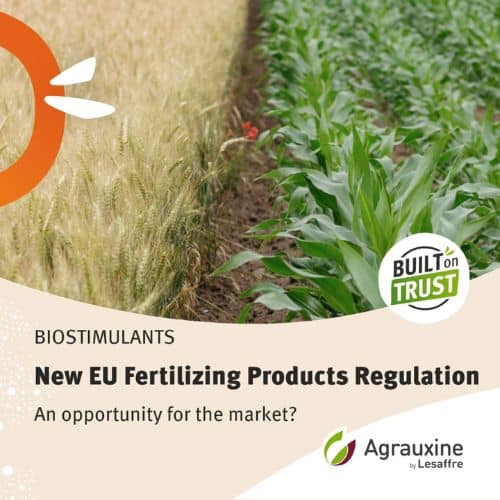
Categories :Experts, Non classifié(e)
The new Fertilizing Products Regulation, an opportunity for the Biostimulants market?
Could you explain the key points of the Regulation (EU) 2019/1009 (The Fertilizing Products Regulation—FPR)?
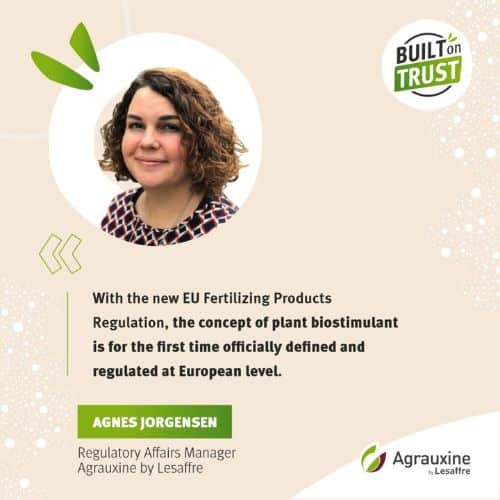
Agnès Jørgensen (Regulatory Affairs Manager): The new Fertilizing Products Regulation expands the harmonization legislation for making EU fertilizer products available on the European Single Market. One of the most significant developments is the creation of a new definition of “fertilizing product” which is more detailed, but also broader than the definition of “fertilizer” of its predecessor which only covered inorganic fertilizers. It indeed replaces the previous European legal basis, Regulation (EC) No. 2003/2003, and extends the scope to also include soil improvers, growing media and plant biostimulants.
For the first time, the concept of plant biostimulant is officially defined and
regulated at European level.
The Regulation lays down common standards for quality, safety and labelling requirements for all fertilizing products. The CABs (conformity assessment bodies) are in charge of carrying out the conformity assessment of the registration documentation and will certify that the product complies with the FPR regulation. Products complying with the relevant requirements of their product type, with regards to product function, component materials and labelling can be sold in all EU Member States with a CE marking and without the need to fulfil additional requirements of national legislations. This new EU Fertilizer Regulation pursues a model of optional harmonization which means that placing on the market of fertilizers is still permitted under national fertilizer legislation. The European regulation will therefore co-exist alongside national laws.
From a business point of view, what does this new European regulation imply for the biostimulant market?
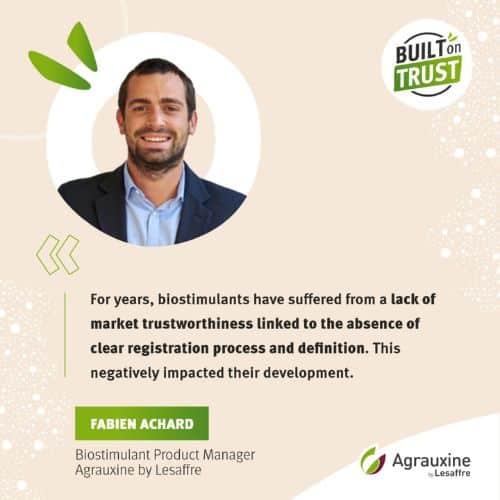
Fabien Achard (Biostimulants Product Manager): For many years, biostimulant products have clearly suffered from a lack of market trustworthiness linked to the absence of clear registration process and definition.
In several countries, biostimulants are falling into the whole fertilizer group without clearly defining what the product does and how it can act. It therefore impacted negatively the biostimulants development.
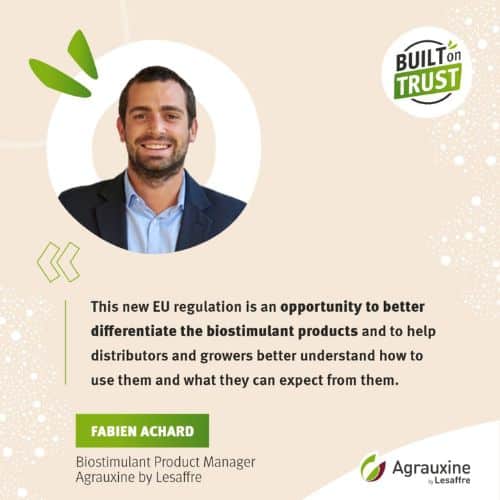
This new biostimulant European regulation is clearly an opportunity to better differentiate and define the products on the market. It is key today for the benefit of the biostimulant market to well define what the product does and does not and what are its claims.
It would therefore help the distributors and farmers better understand how to use the biostimulant on the crops and define how to use it and what to expect from the product.
What challenges must Agrauxine by Lesaffre’s teams tackle to ensure our biostimulant portfolio will be in compliance with the new regulation?
Agnès Jørgensen: The European regulation is part of the EU Circular Economy Action Plan and aims to considerably facilitate the development and commercialization of fertilizers, opening the European market for new technologies.
However, weaknesses have already been identified, among them the current list of microbial biostimulant which only includes four microorganisms for the formulation of biostimulants leaving out many microorganisms with potential biostimulant effect, thereby limiting innovation in this area.
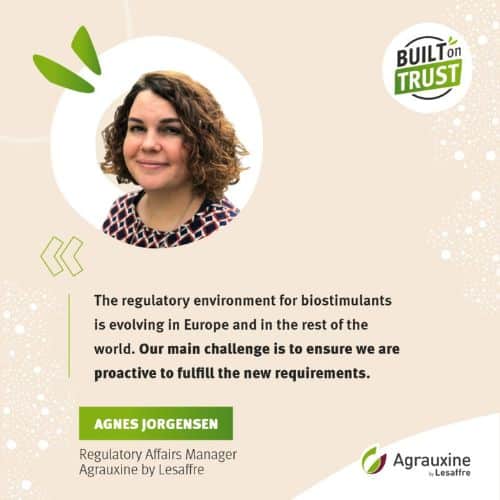
In addition, the regulatory environment for biostimulant is evolving also in the rest of the world. Our main challenge is therefore to ensure that we are proactive to fulfill these new requirements. We are especially following closely the discussions in the US (biostimulant bill and EPA biostimulant guide) and in LATAM where several countries are drafting or implementing biostimulant regulations (e.g. Chile, Argentina, Peru).
Regarding the European FPR, we are currently preparing the EU technical dossier for our product Smartfoil including quality, safety, technical and efficacy information for submission to the notified body in the upcoming months.
Fabien Achard: Agrauxine by Lesaffre’s strategy is clearly to be identified as a biostimulant expert on the market thanks to our technical and industrial knowledge. Our aim is always to well register our products following the right product definition.
That’s why we also decided to join the EBIC association in 2023 in order to closely follow all the key regulatory and business topics linked to Biostimulants in Europe but also to ensure a follow-up of the upcoming actions within other continents as the biostimulant environment is continuously evolving.

